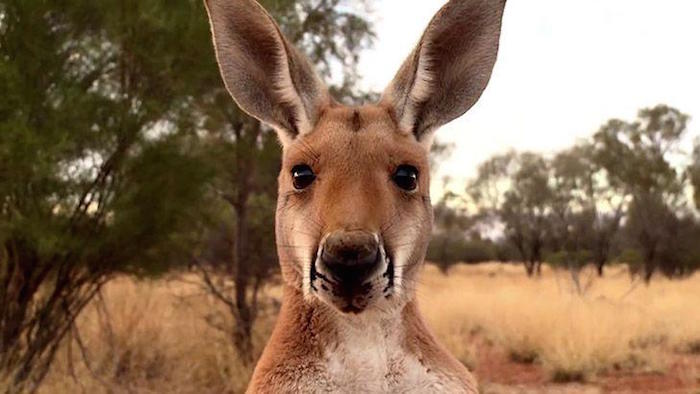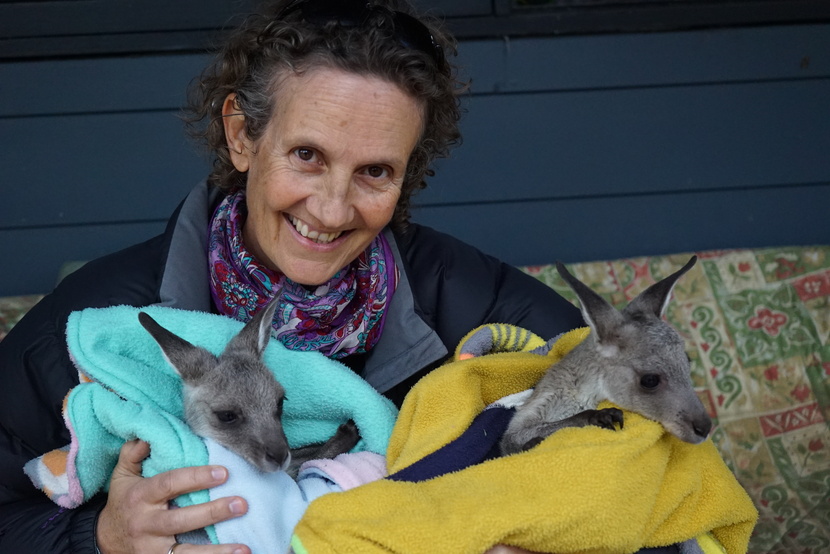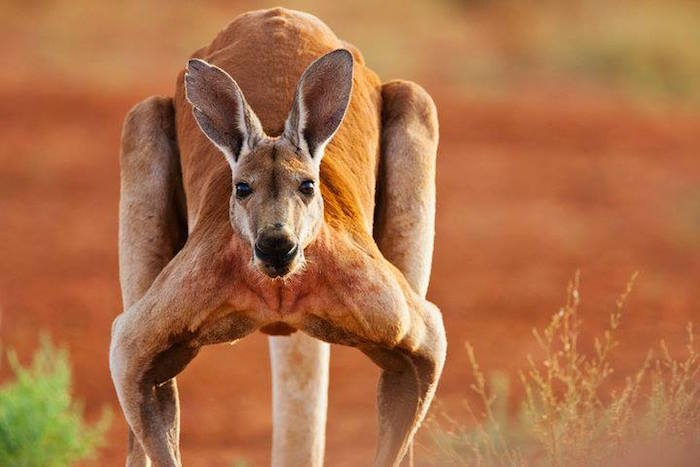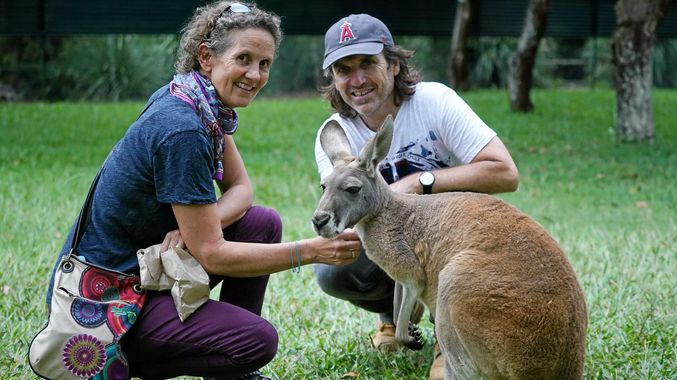KANGAROO A LOVE/HATE STORY: THE KATE MCINTYRE-CLERE INTERVIEW
 Tuesday, March 20, 2018 at 8:03AM
Tuesday, March 20, 2018 at 8:03AM The directing team of Kate McIntyre-Clere and her husband Michael have travelled the world with their searing expose Kangaroo A Love/Hate Story, a challenging documentary that examines Australia’s complex, often exploitative relationship with its national icon, the kangaroo. The film has drawn protests from culling industry advocates, who are determined to expand import markets and don’t need footage revealing a multi-million dollar industry steeped in misinformation and cruelty. With their film now in Australian cinemas, SCREEN-SPACE spoke to Kate McIntyre-Clere about some of the hotbed issues raised in her fearless film (WARNING: Some content is of a graphic nature)…

SCREEN-SPACE: When did you and Michael become aware of the breadth of issues faced by the kangaroo population?
McINTYRE-CLERE: We set out to explore the wonder of this magnificent and unique animal. We knew opinion was split and that would make an interesting story but once we started the research and interviews we were surprised to learn that millions of kangaroos are shot each year and sold for profit. It seemed incongruous to us that Australians, who are immensely proud to hold up the kangaroo as their beloved national symbol, would sanction their nightly killing, with so little interest in questioning what is going on.
 SCREEN-SPACE: There would be a global outcry if your footage - killing of young animals, often still on the teat; killing of breeding females - impacted any other form of wildlife. Why are those in power largely turning a blind eye in the case of the kangaroo?
SCREEN-SPACE: There would be a global outcry if your footage - killing of young animals, often still on the teat; killing of breeding females - impacted any other form of wildlife. Why are those in power largely turning a blind eye in the case of the kangaroo?
McINTYRE-CLERE: That is the question the Australian public need to be asking their government: to come clean about all the permitted killing of kangaroos that is happening across the country. We think Australians do not know that killing kangaroos is the largest terrestrial wildlife kill on the planet. Or that kangaroos are killed and eviscerated in the bush and carried on the back of open trucks through the dusty tracks for hours until refrigeration. Most Australians do not know how cruelly the baby joeys are treated, or how many kangaroos are mis-shot and left to die from horrific injuries. We believe Australians will be shocked to hear how their beloved national emblem is being sold for pet food, sausages and soccer boots. It’s time they did hear. We have found from making the film that the government and civil society has let the kangaroo down. (Pictured, above: Kate McIntyre-Clere)
SCREEN-SPACE: Was there ever a concern that some of the content might just be too much for your average viewer?
McINTYRE-CLERE: Every shot was discussed fully. We decided that the audience needed to witness what is happening to kangaroos. Much of the footage has been stylised, leaving the audience with an impression rather than the gruesome details. We left many more violent images out of the film.
 SCREEN-SPACE: Have you been surprised by the coverage from some mainstream media? Several outlets have sided with the industry and sought to discredit the claims you present.
SCREEN-SPACE: Have you been surprised by the coverage from some mainstream media? Several outlets have sided with the industry and sought to discredit the claims you present.
McINTYRE-CLERE: It is a much more balanced film than some press have stated, but it seems to have hit a sensitive nerve. We worked to get a cross section of voices, including politicians, scientists, farmers, shooters, kangaroo industry leaders and indigenous Australians. If the audience doubts the treatment of kangaroos or if people have strong opinions, we recommend they see the film to learn more and make up their own minds. There is very little open discussion in mainstream media of the population (levels), hygiene or cruelty surrounding our misuse of our wildlife.
SCREEN-SPACE: How are US audiences, who perhaps see the kangaroo as a more mythical, iconic creature, reacting to the film?
McINTYRE-CLERE: The film was very well received and got rave reviews from the press including The New York Times, Los Angeles Times, and Variety. The US audiences were shocked to learn how Australians treat their national icon. They have no idea that kangaroos are killed, often treated as pests instead of the wildlife they are and exported for pet food, human consumption and leather goods. Some states have very strict laws about the importation of wildlife so there was concern about this at government levels.
 SCREEN-SPACE: Disregard for our iconic wildlife is not without precedent – koalas only exist is pockets of population due to deforestation. What action needs to be taken to ensure the best outcome for the kangaroo population?
SCREEN-SPACE: Disregard for our iconic wildlife is not without precedent – koalas only exist is pockets of population due to deforestation. What action needs to be taken to ensure the best outcome for the kangaroo population?
McINTYRE-CLERE: Interestingly, the kangaroo is similar to the koala in its low slow breeding capacity, and kangaroo’s woodland and shrub land habitat has also been cleared since colonisation. We want Australians to be interested in the treatment and future of the kangaroos. We want them to notice when kangaroos are no longer in areas and be more critical and knowledgeable. We hope to initiate a robust, transparent, national conversation that brings together all concerned scientists, indigenous people, land owners, politicians, animal activists, citizens and give the kangaroo the respect it deserves as our national icon that has lived on this continent for 25 million years. (Pictured, above: Kate and husband/co-director, Mike McIntyre, with their star)
SCREEN-SPACE: What might be the worst outcome?
McINTYRE-CLERE: Australia already has the highest loss of biodiversity in the world after Indonesia, and the highest rate of terrestrial mammal extinctions in the last few hundred years. Kangaroos are slow-growing, have low fecundity and high juvenile mortality. Their habitat continues to be cleared and environment damaged, and industrial-scale killing has only got more efficient and organised since colonisation. When people see a mob of kangaroos in a video or image and don’t notice the rest of the landscape is completely empty, then perhaps that is the disturbing answer to this question. As filmmakers, we think the worst possible outcome is we sit on our hands and don’t do anything.
KANGAROO A LOVE/HATE STORY is in Australian cinemas now.
 Australian,
Australian,  Controversy,
Controversy,  Documentary,
Documentary,  Kangaroo
Kangaroo 
Reader Comments